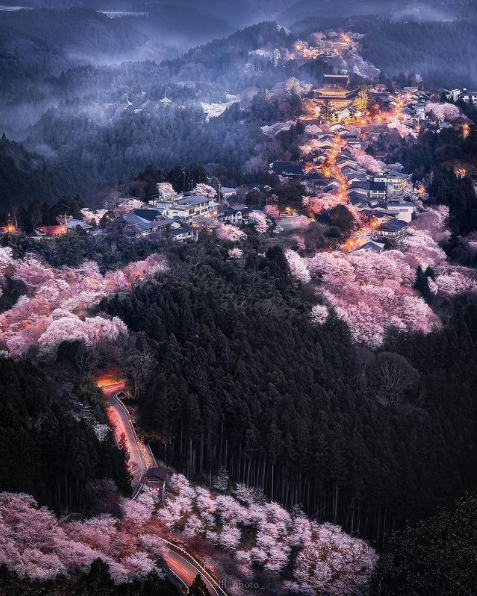The Japanese have a deep and long enduring relationship with the seasons. This is most profound during the hanami (cherry blossom season in March and April), and so too in the autumn (kōyō or momiji season) before the onset of winter.
if visiting the country with a Japan Rail Pass. Between stations, you’ll have
the opportunity to observe the local countryside in all its autumn glory.
For a truly unique Koyo experience at a relaxed pace, consider a sightseeing train ride on the Sagano Scenic Railway through the picaresque Arashiyama region.
Best places in Kyoto
Kyoto is often considered the best city in Japan to view the impressive fall foliage, thanks in part to the large number of traditional temples with sprawling, forested grounds
- Arashiyama – An extensive bamboo forest on the outskirts of the city
- Daigo-Ji Gardens – A large green space popular with photographers in the autumn
- Daitoku-Ji – A temple with an impressive tunnel made out of maples at the entrance.
- Eikando Temple – The trees in these temple grounds are impressively lit during the fall
- Kinkaku-Ji – The gold-leaf coating of this famous temple is perfectly complemented by the colours of its surrounding trees in the autumn
- Nanzen-Ji – Made famous by the film Lost in Translation, which shot scenes at this temple during the fall
- Tenryu-Ji – A UNESCO World Heritage Site with an impressive landscape garden
- Tofukuji Temple – The Tsutenkyo Bridge in the temple grounds is one of the most popular leaf viewing spots in the city.
Best places in Tokyo
Although internationally known as a bustling metropolis, Tokyo is also packed with green spaces such as parks and gardens ideal for Momijigari. Some of the most popular include:
- Jingu Gaien Ginkgo Avenue – A famous street lined with ginko trees which turn a bright yellow in the autumn
- Koishikawa Korakuen – A popular garden, close to the Tokyo Dome, which boasts a large number of maple trees
- Mount Takao – Located on the outskirts of the city, this busy weekend destination is ideal for an autumn hike
- Oze National Park – Another popular hiking spot, located around 100 kilometers to the north of the city
- Rikugien Garden – An impressive landscape garden popular for both red leaf and cherry blossom viewing
- Shinjuku Gyoen – A large city park popular for autumn picnics
- Ueno Park – This large green space boasts over 9,000 trees with spectacular colors in the fall
- Yoyogi Park – Located close to the trendy Harajuku neighborhood and offers a mix of both ginkos and maples with spectacular autumn colors.
When to start planning your autumn trip to Japan
Those wishing to experience Momijigari in Japan are advised to start planning their autumn around 6 months in advance of travel, particularly if they wish to visit the major cities for fall leaf viewing.
As during the cherry blossom in the spring, accommodation in Tokyo and Kyoto can fill up quickly for the fall foliage season, so it’s advisable to make reservations as soon as travel dates are known.


















